Following the appointment of Morio Ueno as President, the Company embarked upon a series of innovations that created its present business base. The first step was the Company's advancement into the business of company documents required by the Commercial Code (the current Companies Act). At that time, most of the Company's clients were the general affairs departments of listed companies who commissioned the printing of securities certificates. Through this relationship, the Company also received some orders for documents for general shareholders' meetings. In the late 1970s and early 80s, following the Company's publication of a practical stock information magazine and working-level stock-related seminars, orders for the production of general shareholders' meeting convocation notices and annual reports rapidly grew.
As its next step, through the process of formulating its vision for the future, the Company planned its move into the area of documents related to the Securities and Exchange Act of Japan (currently the Financial Instruments and Exchange Act) as a field of growth outside that of documents required by the Commercial Code. Founded on this new business concept, the Company publicized its "Disclosure Business Declaration" in 1985. For all intents and purposes, this moment marked the Company's "second founding." The Company widened its scope of products, to include securities reports for the disclosure of account settlement, listing applications for IPOs, and investment trust documentation.
To speed up this new business development, the Company set up a nationwide network of sales offices and took a series of bold new steps. It changed its status from an over-the-counter company to a company with stock listed in the Second Section of the Tokyo Stock Exchange, then eventually listed them in the First Section (its current listing). It launched the Disclosure Practice Study Group to provide practical information about disclosure to clients. It began IPO seminars and set up an organization to give advice on documents relating to investment trusts. It advanced into the legal notice field.
This was the time of the "Big Bang" deregulation of Japan's capital markets, when foreign financial institutions and investment trust firms made inroads and expanded their sales operations. The business environment underwent great changes and there was an IPO boom. As a result, the Company's sales rapidly increased as its traditional clients from the general affairs departments of listed companies were joined by companies preparing for IPOs, accounting departments, investment trust management companies and others.
Advancement into the Commercial Code field (the current Companies Act)
| 1978 Strengthens sales force and consulting services for the printing of documents required by the Commercial Code of Japan |
|
|---|---|
| 1978 |
Publishes Kabushiki Jitsumu no Shiori (Stock Practice Handbook) and Soudan-shitsu Dayori (News From the Counseling Rooms) → Becomes a pioneer in information services 
|
| 1981 Overhaul of the Commercial Code → moves to ban corporate extortionists from stockholders' meetings → Greater need for legality from the standpoint of risk management → Expansion in orders for convocation notices and business reports → A reduction in orders for securities certificates with the introduction of the unit share system |
|
| 1983 |
Start of Commercial Code and Securities and Exchange Act seminars 
|
| 1983 |
Joins the NPS Management Institute to enhance its quality and productivity 
|
Advances into the Securities and Exchange Act field (currently the Financial Instruments and Exchange Act field)
| 1984 |
Receives initial order for stock listing application documents (Securities and Exchange Act documents) 
|
|---|---|
| 1985 |
Receives initial order for a securities report (Securities and Exchange Act document) 
|
| 1985 | "Disclosure Business Declaration" issued |
| 1988 |
Publishes guidelines for applications for stock listing (Section Ⅱ) 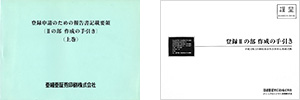
|
| 1988 | Enhancement of Commercial Code and Securities and Exchange Act seminars |
Advancement into the investor relations (IR) field
| 1988 | Begins involvement in IR business |
|---|---|
| 1988 |
Begins the integrated production of business reports, company brochures and videos for IPO ventures 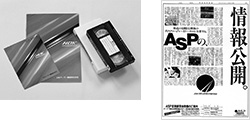
|
| 1989 The new stock listing rush (an IPO boom) |
|
| 1990 |
Starts stock offering seminars → Expansion of IPO support and consulting services 
|
| 1991 Conference for Securities Association releases IR Katsudou no Sokushin ni Tsuite (The Promotion of IR) |
|
| 1993 Japan Investor Relations Association inaugurated |
|
| 1990s | Improves and expands sales structures in readiness for stock offering |
| 1990s |
Sets up a network of branches and sales offices throughout Japan 
|
| 1994 |
Registers as an OTC stock 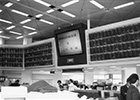
|
| 1996 |
Lists on the Second Section of the Tokyo Stock Exchange 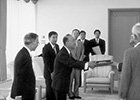
|
| 1992 |
Advances into the legal notice and IR advertisement fields 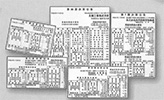
|
| 1995 | Starts the "Stock listing application document-writing workshop" |
| 1996 | Begins publication of the Kabushiki Koukai Hakusho (White Paper on Share Offerings) |
| 1996 |
Holds share-offering intensive seminars throughout Japan 
|
| From 1996 "Big Bang" deregulation of Japan's financial markets |
|
Advancement into the investment trust field
| 1988 | Advancement into the investment trust documentation field |
|---|---|
| 1988 | Sets up a dedicated sales force |
| 1990 Foreign-owned asset management companies begin business in Japan |
|
| 1992 | Sets up its Advisory Division |
| 1996 Financial market Big Bang → Deregulation and expansion of market for financial instruments |
|
| 1996 | Work orders, mainly from foreign asset management companies, rapidly increase → Exceed 10% of total sales Enhances its marketing systems |
| 1998 Investment trusts Bancassurance ban lifted |
|
| 2000 Revision of the Act on Investment Trust and Investment Corporations → Companies obliged to disclose information about their Securities and Exchange Act compliance Responds to rapid increase in orders following revision for the system Begins services to assist in J-REIT establishment |
|
| 2001 First J-REIT listing Since then, PRONEXUS has participated in over 95% of all new listing projects in the J-REIT sector and over 80% of all settlement of accounts and public offering projects (as of March 2016) |
|
| 2008 | Sales in the investment trust/REIT sector → Grow to account for a little over 30% of total sales |